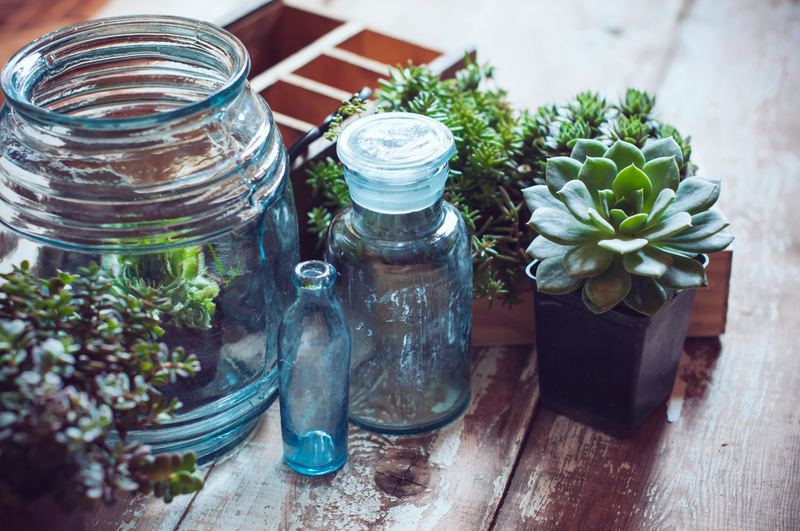Exploring Ways to Halt Microplastic Pollution: A Comprehensive Guide
Microplastic pollution has emerged as one of the most pressing environmental challenges of the 21st century. As tiny fragments of plastic less than 5mm in size, microplastics invade our waterways, oceans, soils, and even the air we breathe. Tackling this pervasive issue requires innovative solutions, collective action, and a commitment to sustainable practices. In this article, we will dive deep into effective strategies to reduce microplastic pollution, highlight progress, and present actionable steps for governments, industries, and individuals alike.

Understanding Microplastic Pollution
What Are Microplastics?
Microplastics are minuscule plastic particles that originate from various sources, including the breakdown of larger plastic debris and direct introduction from products such as exfoliating beads in cosmetics. These contaminants are now pervasive in the environment, showing up in marine ecosystems, freshwater sources, agricultural lands, and even in the food chain.
Why Is Microplastic Pollution a Major Concern?
- Threat to Marine Life: Microplastics can be ingested by marine organisms, leading to physical blockages, malnutrition, and exposure to toxic chemicals associated with plastics.
- Human Health Risks: Recent research indicates that humans might ingest microplastics through food and water, raising concerns over potential health effects.
- Environmental Persistence: Unlike many pollutants, plastics do not naturally degrade for centuries, ensuring their presence and cumulative impact.
Sources of Microplastic Pollution
- Primary Microplastics: These are intentionally manufactured small plastics, found in products such as personal care items (microbeads), industrial abrasives, and synthetic fibers.
- Secondary Microplastics: Created from the breakdown of larger plastic items like bags, bottles, and packaging due to environmental weathering.
- Everyday Sources: Everyday activities such as washing synthetic clothes, tire erosion from vehicle use, and plastic waste mismanagement contribute significantly to the microplastic load.
Innovative Ways to Halt Microplastic Contamination
1. Policy and Regulatory Approaches
Policy intervention is key in fighting microplastic pollution. Several governments and organizations have already introduced bans and regulations, but more robust and widespread action is needed.
- Ban on Microbeads: Many countries have banned the manufacture and sale of products containing microbeads--tiny plastics used in cosmetics and cleaning products.
- Stricter Packaging Laws: Enforcing regulations that limit single-use plastics and encourage recyclable or biodegradable alternatives.
- Regulating Microfiber Emissions: Introducing standards for washing machines and textile manufacturers to minimize the release of synthetic fibers during laundry cycles.
2. Technological Solutions
Technological advancements offer promising avenues for halting microplastic pollution at its source and capturing it from the environment.
- Filtration Devices: Fitting washing machines with advanced filters to trap microfibers before they enter wastewater.
- Stormwater and Wastewater Treatment Upgrades: Upgrading municipal water treatment systems to capture microplastics before water is released into natural ecosystems.
- Innovative Cleanup Technologies: Deployment of floating booms, skimmers, and autonomous robots designed to remove microplastics from rivers and oceans.
3. Industry and Product Design Innovations
Halting the flow of microplastics demands rethinking product design, materials, and manufacturing processes.
- Developing Biodegradable Plastics: Investing in the research and production of plastics that can safely break down without leaving harmful residues.
- Eco-Labeling and Consumer Transparency: Clear labeling on products regarding their microplastic content enables informed consumer choices.
- Textile Innovations: Moving toward natural fibers (e.g., cotton, wool, hemp) and developing textiles that shed fewer fibers during use and washing.
4. Individual Action: How You Can Help Stop Microplastic Pollution
- Choose Natural Fibers: Opt for clothing and textiles made from natural materials that do not release synthetic microfibers.
- Avoid Products with Microbeads: Check product labels and steer clear of personal care products containing polyethylene, polypropylene, or other microplastics.
- Responsible Waste Disposal: Recycle properly, avoid littering, and reduce single-use plastics in your daily routine.
- Advocate for Change: Support legislation and organizations working to curb plastic pollution and demand corporate responsibility.
Promising Research and Breakthrough Technologies
Biodegradable Alternatives: Hope for the Future
The development of biodegradable plastics and materials is a significant leap forward in combating microplastic waste. Polymers derived from plant-based sources such as cornstarch, sugarcane, and algae offer compelling alternatives to conventional petrochemical plastics. Cutting-edge research aims to create materials that provide the same functionality but degrade safely in natural environments, eliminating the risk of microplastic formation.
Advanced Filtration Systems
Innovative wastewater treatment solutions are making it possible to capture microplastics before they reach waterways. Technologies such as membrane bioreactors, granular activated carbon, and advanced oxidation processes show high potential for improving microplastics removal rates.
- Home appliances are now available with built-in microfiber filters, letting households become a frontline defense against pollution.
- New filtration materials and methods continue to emerge, giving hope for broad-scale implementation in public and industrial systems.
Natural Solutions: Harnessing Nature to Tackle Microplastics
Some scientists are exploring biological approaches to eliminate microplastic pollutants. Certain species of bacteria and fungi show the ability to biodegrade plastics, potentially providing a natural means to remediate contaminated environments.
- Mycoremediation: The use of fungi to break down plastics in soil and water environments.
- Bioremediation: Harnessing microorganisms that digest synthetic polymers as an innovative cleanup strategy.
The Role of Education and Awareness
Empowering Communities to Halt Microplastic Pollution
Public education plays a crucial role in shaping attitudes and behaviors regarding plastic use and disposal. Initiatives to raise awareness among citizens--from schools to community organizations--enable people to take meaningful action and contribute to reducing microplastic contamination.
- School Programs: Encouraging environmental stewardship and teaching young people how to minimize plastic use and waste.
- Public Campaigns: Government and NGO-led information drives that highlight the dangers of microplastics and the importance of responsible consumption.
- Global Collaboration: Connecting communities worldwide to share ideas and successful strategies for tackling microplastic pollution.
The Importance of Research and Monitoring
Continuous research is essential to understand the full scope of microplastic pollution and evaluate the effectiveness of mitigation strategies. Regular monitoring allows policymakers and scientists to target interventions more effectively.
- Developing Standard Testing Methods: Creating internationally recognized protocols for measuring microplastics in water, soil, and air.
- Mapping Hotspots: Identifying sources and areas with the highest concentrations of microplastic pollution to prioritize remediation efforts.
- Tracking Progress: Ongoing studies help validate the success of bans, regulations, and individual actions aimed at fighting this environmental threat.
Global Efforts and Successful Case Studies
International Agreements and Partnerships
Combating microplastic pollution demands collaborative international action. Organizations like the United Nations Environment Programme (UNEP) and the G20 are establishing frameworks for global cooperation, while regional agreements provide context-specific solutions.
- Plastic Waste Partnerships: Initiatives such as the Basel Convention's Plastic Waste Partnership support safe management and reduction of plastic waste worldwide.
- Coordinated action helps ensure microplastic reduction strategies are consistent and impactful.
Success Stories: Microplastics Reduction in Action
- Microbead Bans: The United States, United Kingdom, and several EU countries have effectively banned microbeads, removing millions of plastic particles from water systems annually.
- Innovative Textile Regulations: France has mandated microfiber filters in new washing machines by 2025, a policy expected to greatly reduce microfiber pollution.
- River Plastic Cleanup: Projects like The Ocean Cleanup are deploying river interceptors around the world, stopping plastic before it can reach the seas.
Challenges in Halting Microplastic Pollution
While substantial progress is being made, significant challenges remain.
- Detection Dilemmas: Microplastics are extremely difficult to detect and monitor, requiring advanced, costly equipment.
- Global Disparities: Not all countries have the resources or infrastructure to adequately address or study microplastic pollution.
- Fragmented Regulations: Regulations vary widely by region, which can hinder progress on a global scale.
- Consumer Awareness: Many consumers are still unaware of the hidden sources of microplastics in everyday life.

Looking Ahead: A Future Without Microplastic Pollution
The battle against microplastics is complex and requires the integration of scientific, industrial, political, and individual efforts. By pushing for innovation, legislation, and personal responsibility, we can collectively make strides toward a cleaner, safer environment.
Every action counts: Whether it's upgrading wastewater treatment, banning harmful plastics, innovating cleaner products, or educating communities, we all have a role to play. The path to halting microplastic contamination is challenging--but with continued vigilance, innovation, and cooperation, a future free from microplastic pollution is within reach.
Conclusion: Take Action Today
Microplastic pollution will not solve itself. Governments, industries, and individuals must collaborate to adopt sustainable practices, develop innovative solutions, and advocate for change. Start by making informed choices, supporting policies that reduce microplastics, and spreading awareness in your community. Together, we can halt microplastic pollution and preserve our planet for future generations.